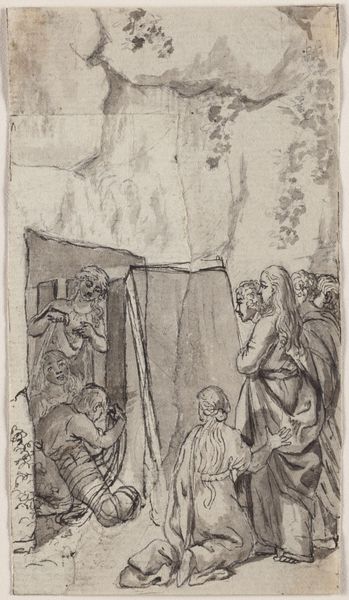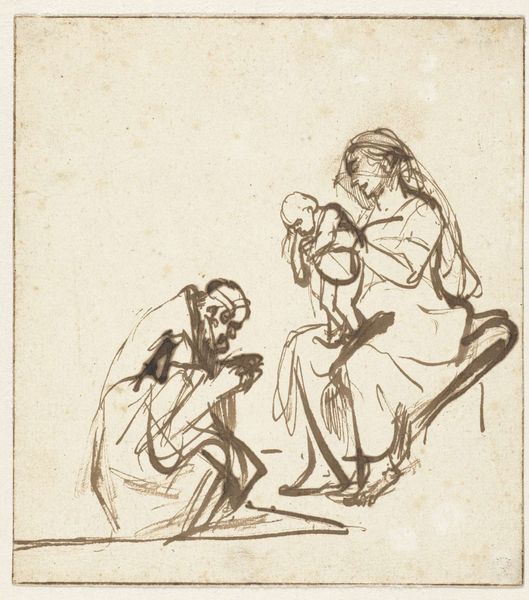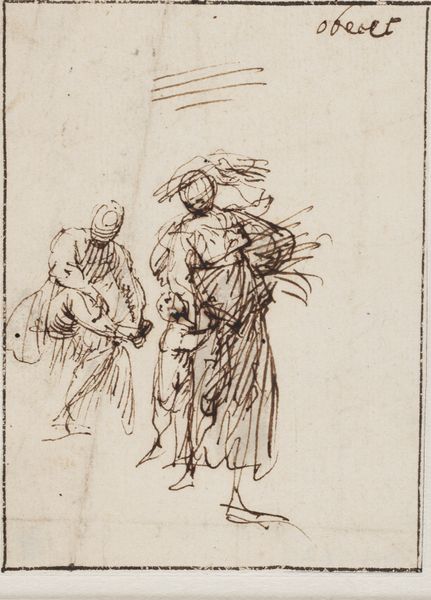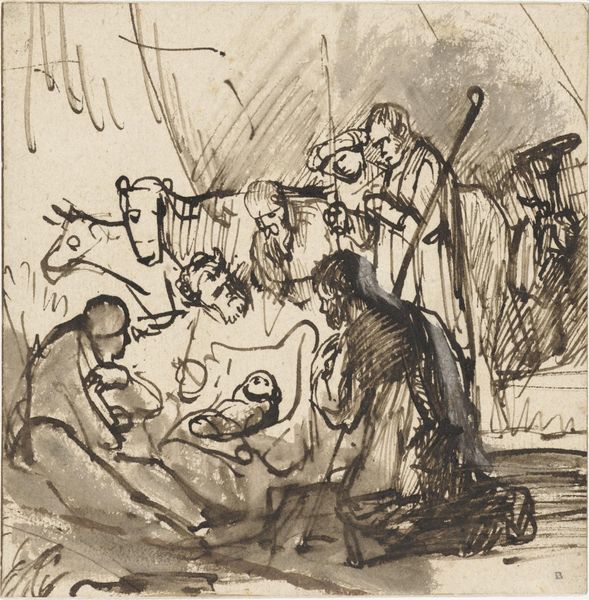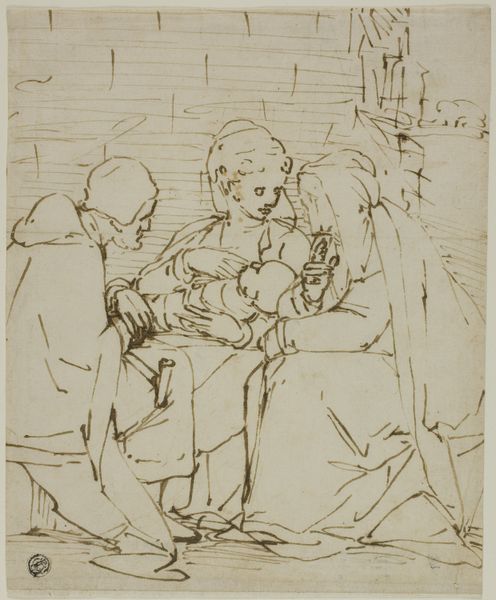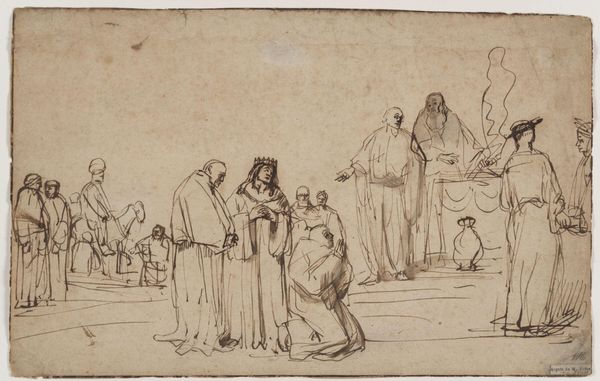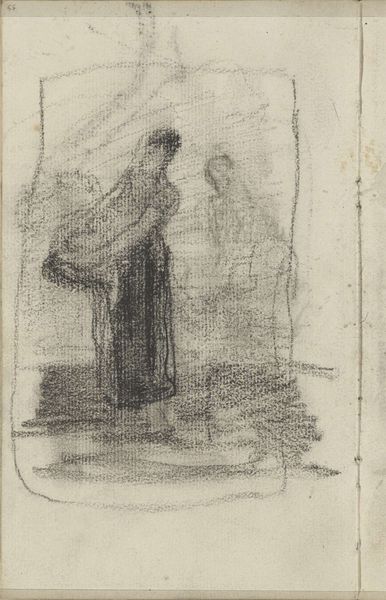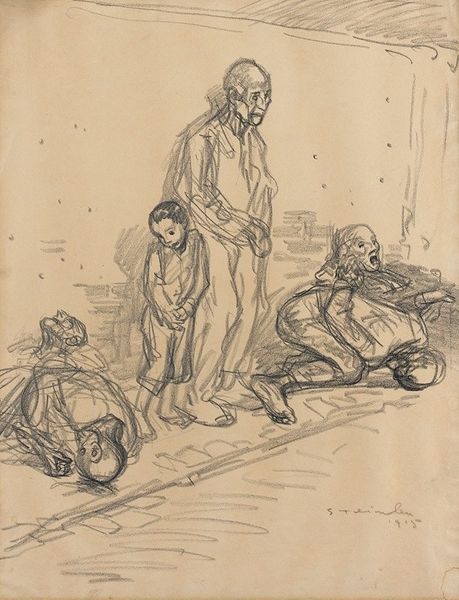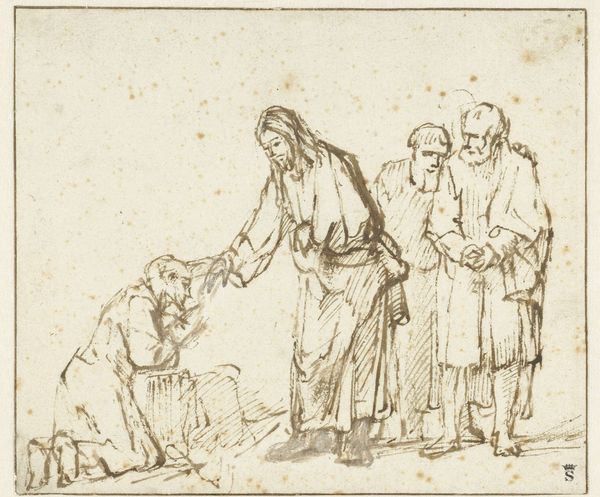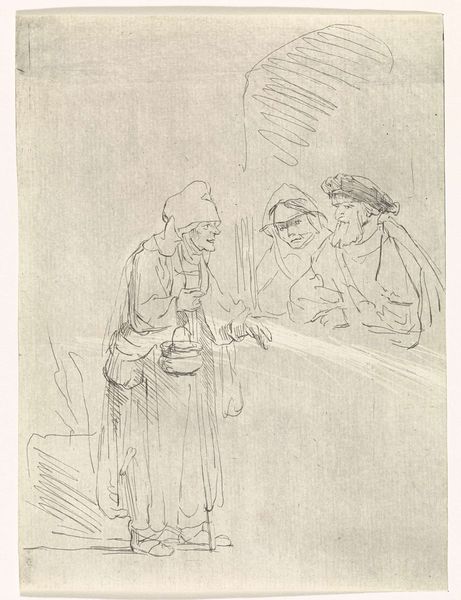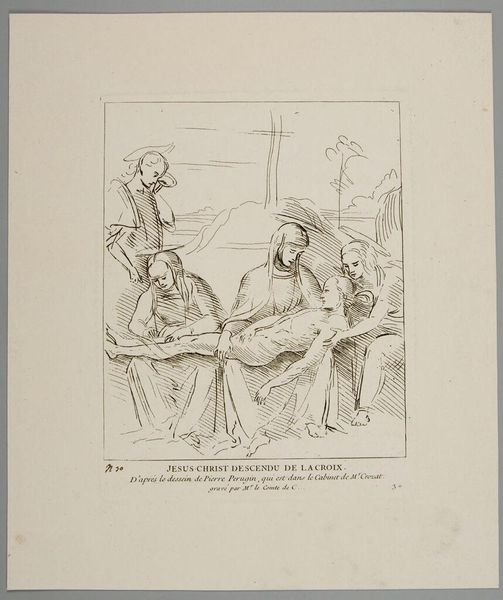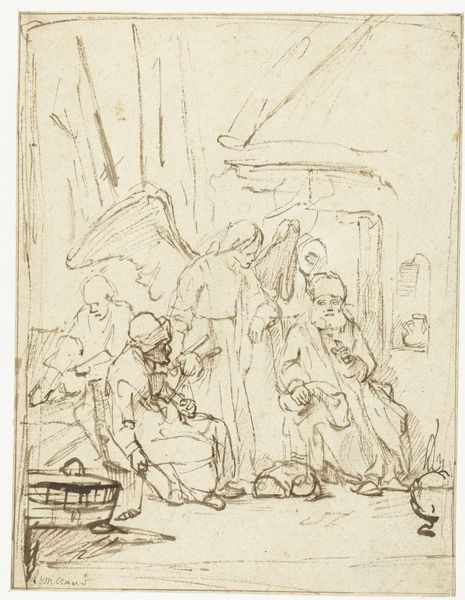
drawing, ink, pen
#
drawing
#
narrative-art
#
baroque
#
pen sketch
#
figuration
#
ink
#
sketchbook drawing
#
pen
#
genre-painting
Dimensions: height 142 mm, width 93 mm
Copyright: Rijks Museum: Open Domain
Curator: Welcome. Before us, we have a 17th-century drawing entitled "Prediking van Christus," or "Preaching of Christ," crafted with ink and pen by an anonymous artist. Editor: The first impression I have is how raw and immediate it feels. The pen strokes are so minimal, but they still manage to convey such depth of emotion. You almost get the sense of eavesdropping on an intimate moment. Curator: Absolutely. The hasty, almost frantic lines suggest it might have been created as a study or a preparatory sketch. Consider the texture created by the varying line weights and the stark contrast of the ink against the paper; this all tells a story about the artist's process. Editor: For me, it’s the iconic representation of Christ – even in this simple sketch, he is instantly recognizable. The artist is working within centuries of symbolic language and established iconography. Observe the expressions of the other figures: their turbans suggest a foreign or ancient setting. The upward gazes might be meant to depict awe and curiosity. Curator: Indeed, and speaking of material realities, the ink used here—what type, its cost, the availability of paper at the time—these factors significantly dictated artistic production and accessibility in the 17th century. Who could afford to commission art or even buy these sketches, and how does this influence the artist’s decisions? Editor: It reminds me of illuminated manuscripts, where specific colors and symbols held religious weight. While this is not colored, the starkness of the ink arguably serves to emphasize the profound simplicity of Christ’s message. Even something like a simple jug at the bottom is filled with everyday sacredness. Curator: I see your point. Perhaps even the seeming incompleteness—the raw materiality of the drawing itself—resonates with certain Protestant sensibilities of the period, which shunned overly ornate religious objects and favored more direct engagement. Editor: Exactly! The sketch's simplicity encourages us to participate more actively with the spiritual message. So, by delving into the iconography and historical context, we gain a richer understanding of the artwork’s symbolic language. Curator: And by considering the tangible resources and production constraints, we see how even sketches are testaments to particular means of labor. Editor: Precisely! These different perspectives enrich our comprehension and provoke contemplation. Curator: Very true. Art holds a fascinating interplay between ideas and practicalities.
Comments
No comments
Be the first to comment and join the conversation on the ultimate creative platform.
